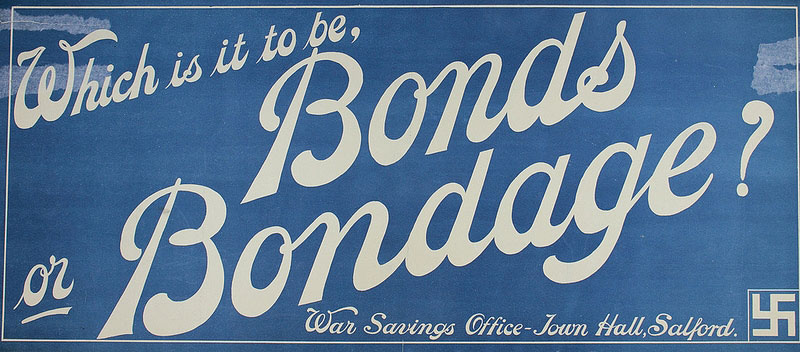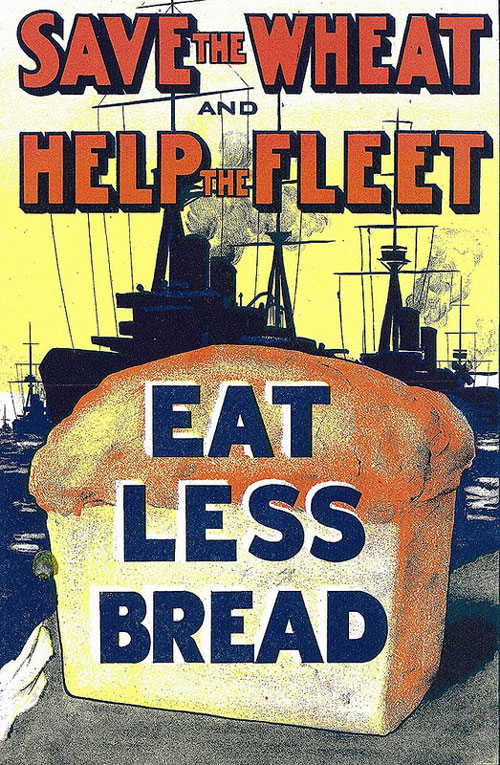When thinking of war posters, the slogans ‘Keep Calm and Carry On’ or ‘Make-do and Mend‘ might spring to mind, or perhaps the darker ‘Daddy, what did YOU do in the Great War?’ During the First and Second World Wars, posters were a vital method of communication; the government used them to increase morale, reduce panic and boost both agricultural and industrial output.
You could argue that they’re now embedded in the culture of the country. It’s highly likely every one of us will recognise Lord Kitchener’s ‘I Want You’ designed by Alfred Leete, in 1914. We have a collection of over 150 posters at Manchester Archives.

'Which is it be, Bonds or Bondage?' poster
Take this poster from the collection ‘Which is it to be; Bonds or Bondage?’ issued by the War Savings Office in Salford (date not known), which is unique to the area.

'Help the Fleet - Eat Less Bread' war poster
The widely produced ‘Save the Wheat and Help the Fleet’, issued by the Ministry of Food in 1917 forms part of a wider campaign encouraging members of the public to be more economical with food, and like many other posters of the time, attempts to create a link between individual choices and the wider war effort.
Some of the most unique posters within the collection were created by Bert Thomas, a political cartoonist that contributed to Punch Magazine, and who during the First World War produced the famous poster, ‘Arf a mo Kaiser’.
You can view more of our collection, in the Manchester at War Flickr set. The National Archives also has a digitised collection of war posters on Wikimedia Commons, including the famous ‘Dig for Victory‘.
Cheers for that Kate – I shall definitely look into the suggested locations!
thank you for that kate
The other thing that war posters did was to get people to buy such things as the War Loan whereby people kept their money for decades to help the country and the Americans used the Hollywood stars like Mary Pickford to promote them. I would suggest that the Salford poster is pre-1944 and probably 1939-1940 given the Nazi symbol and the running of the war as it affected the UK.
The poster on bread is of course related to sunk British shipping as items such as commodities and bananas were affected and the blockade could result in starvation. The posters were also used to take people’s minds off the war, the collection of pot and pans to help build spitfires were of no use at all and were just a diversion.
Hi David
Within the collection there are a lot of posters which aimed to encourage people to buy war bonds. We also have ‘The kitchen is the Key to Victory: Eat Less Bread’, which is in the same vein as ‘Save the Wheat and Help the Fleet’.
this is a really good source
[…] IWM communicate #WarPosterWednesday which is a great glimpse into the archive. This blog post from The National Archives on ‘make do and mend’ is also worth […]